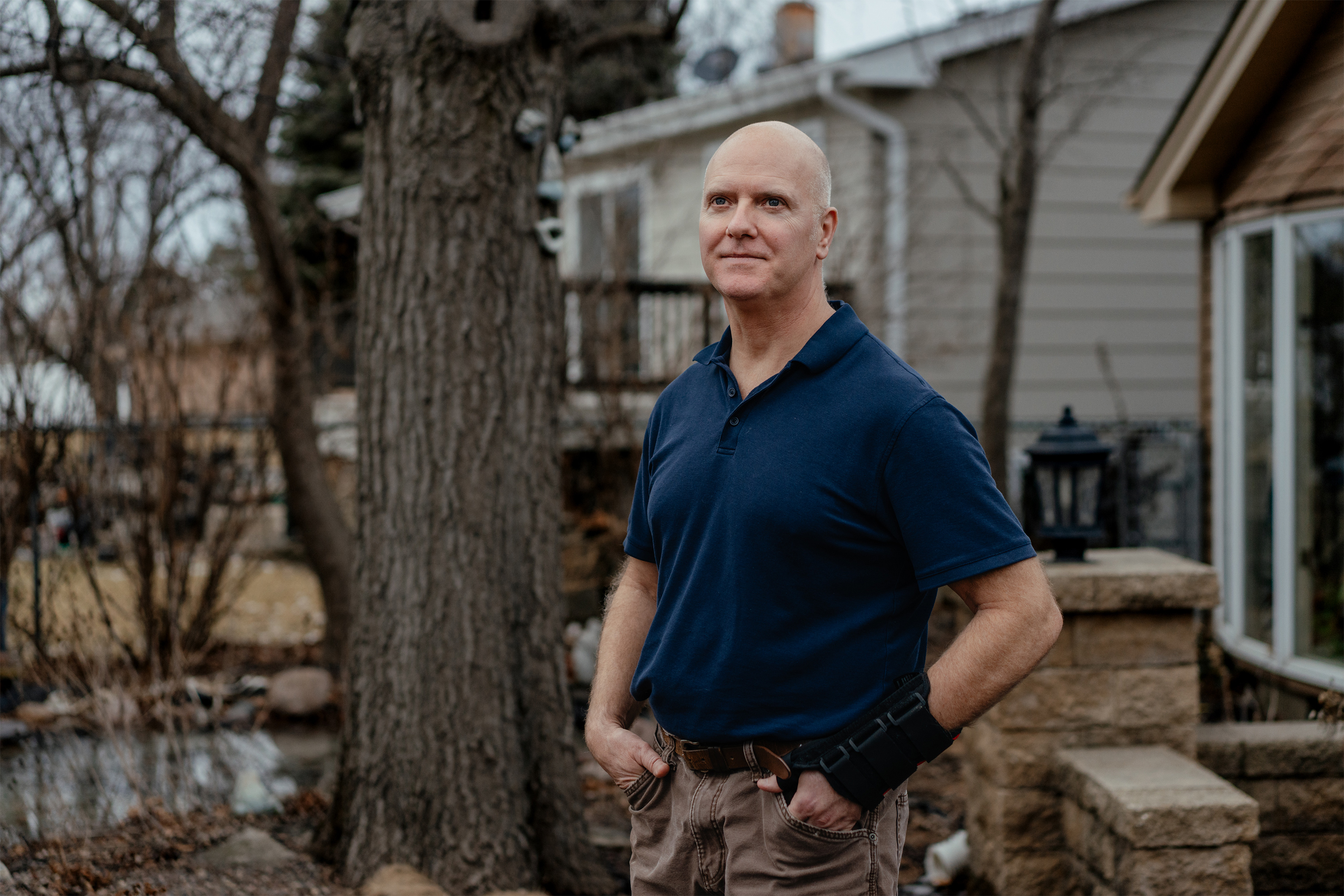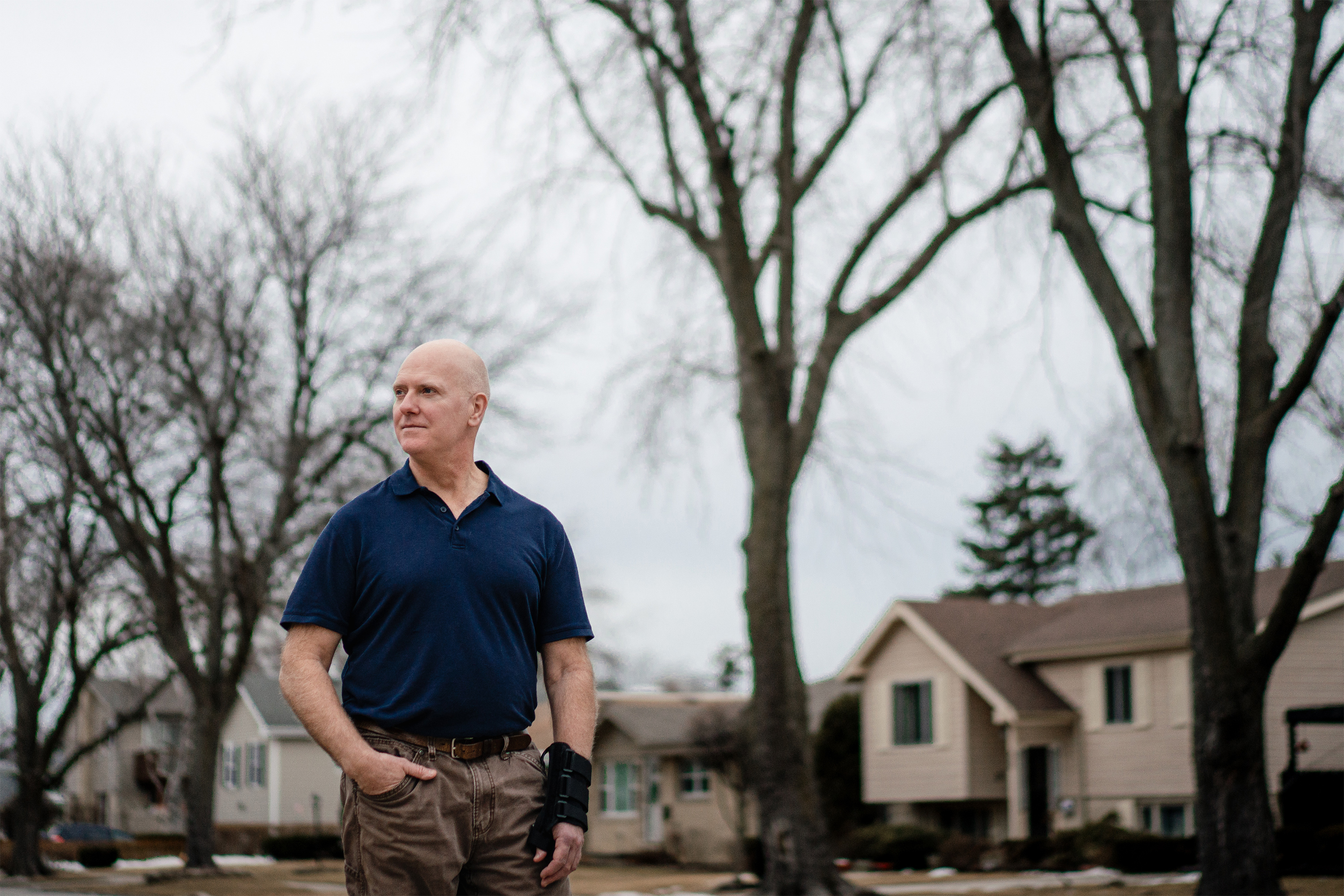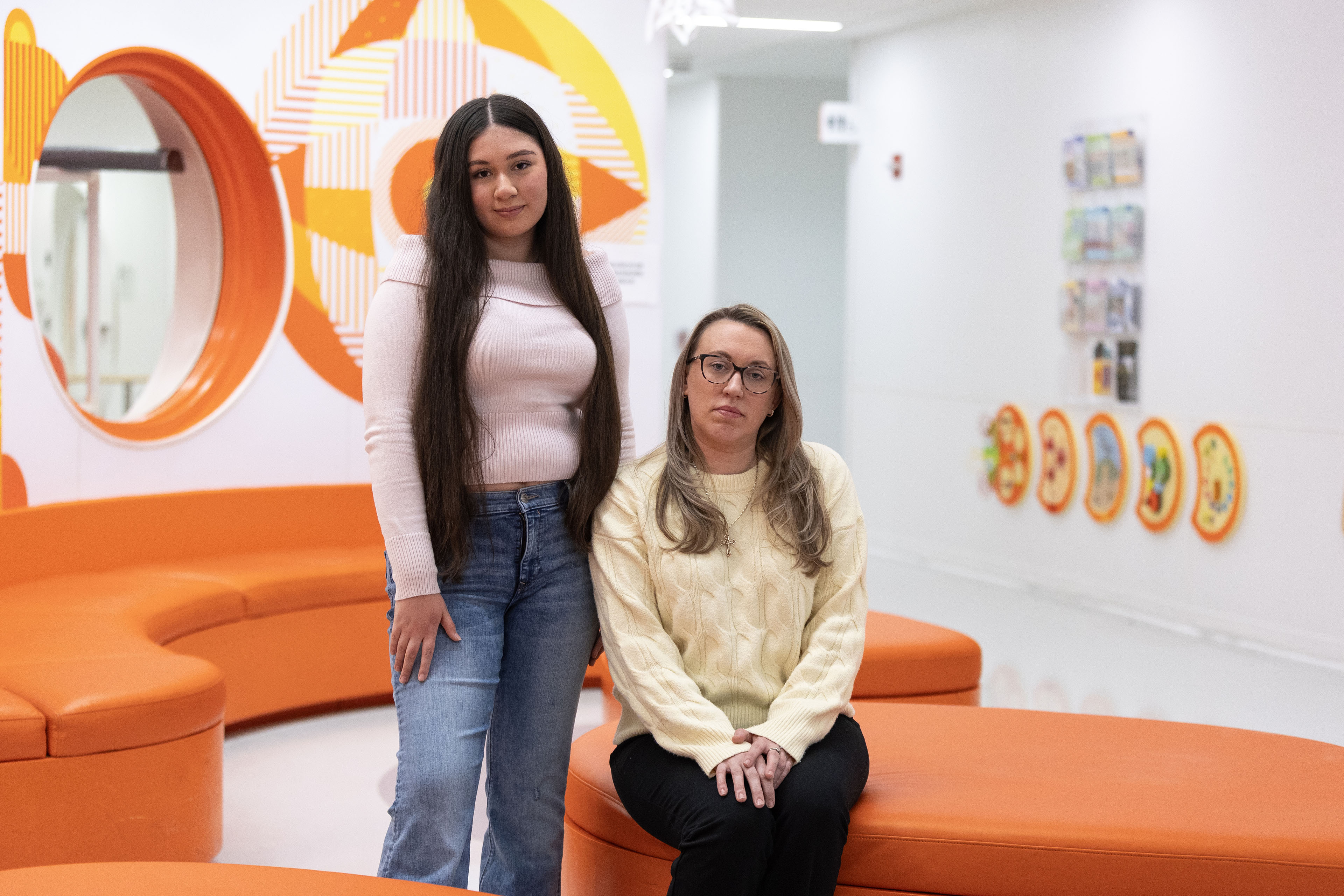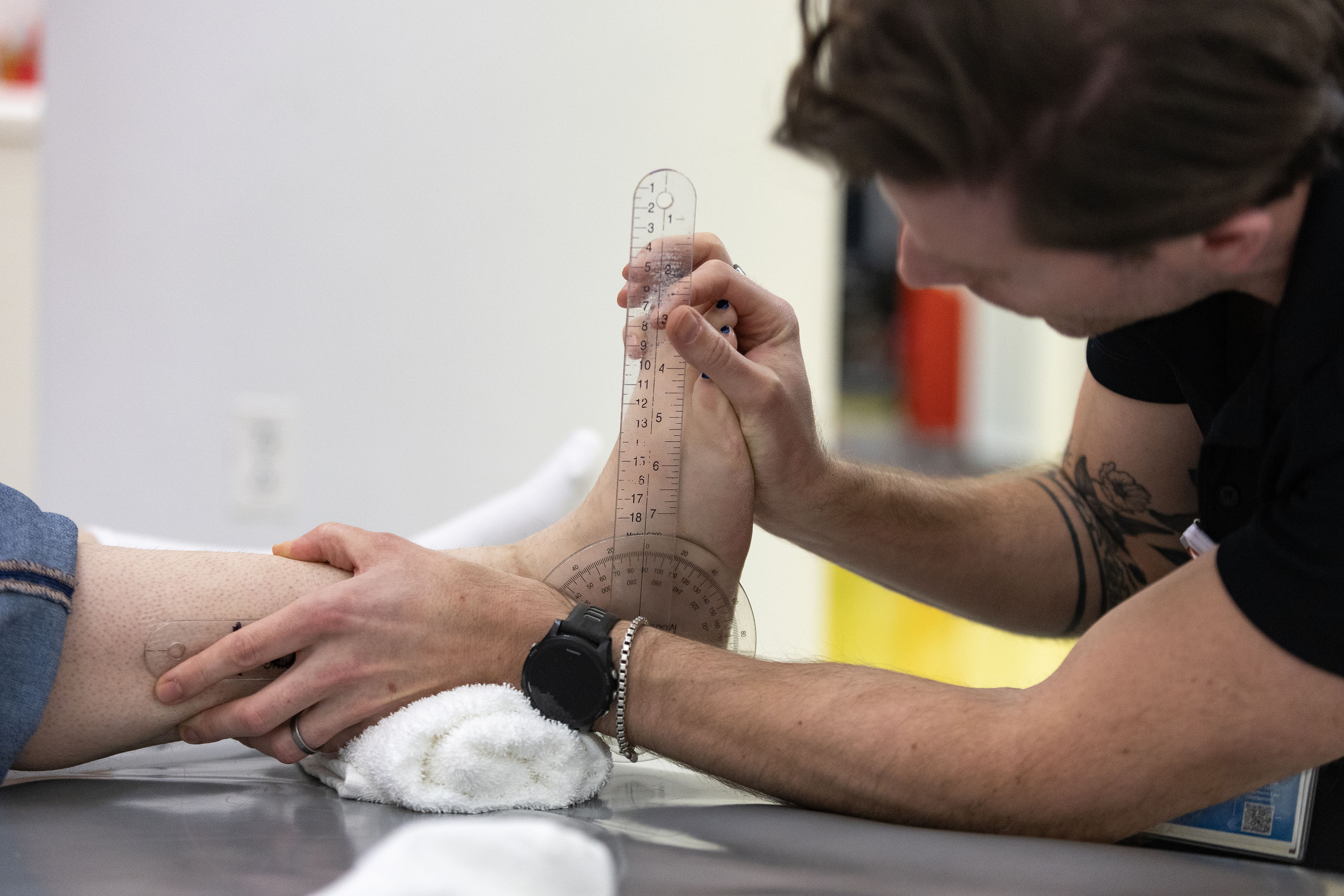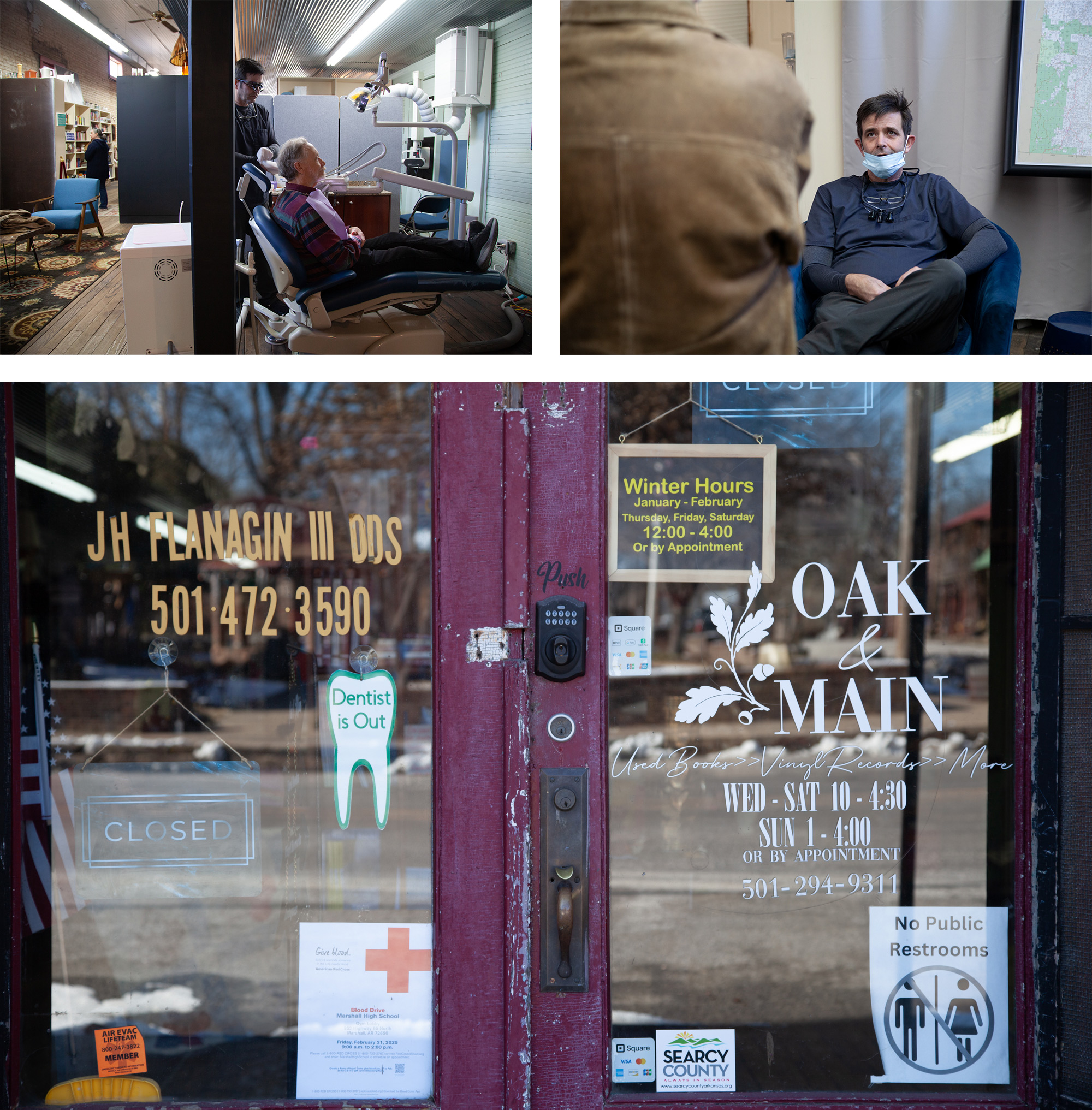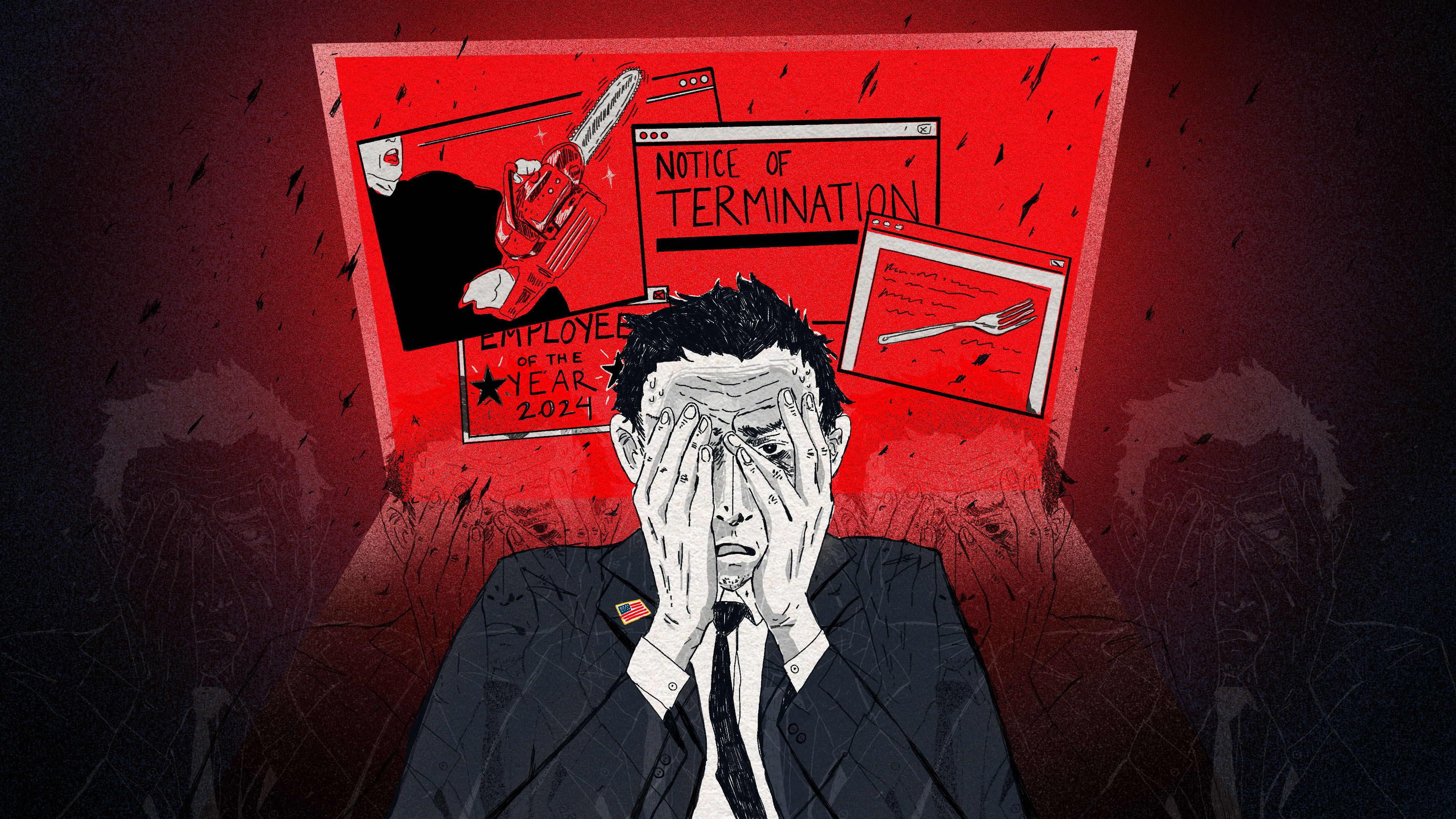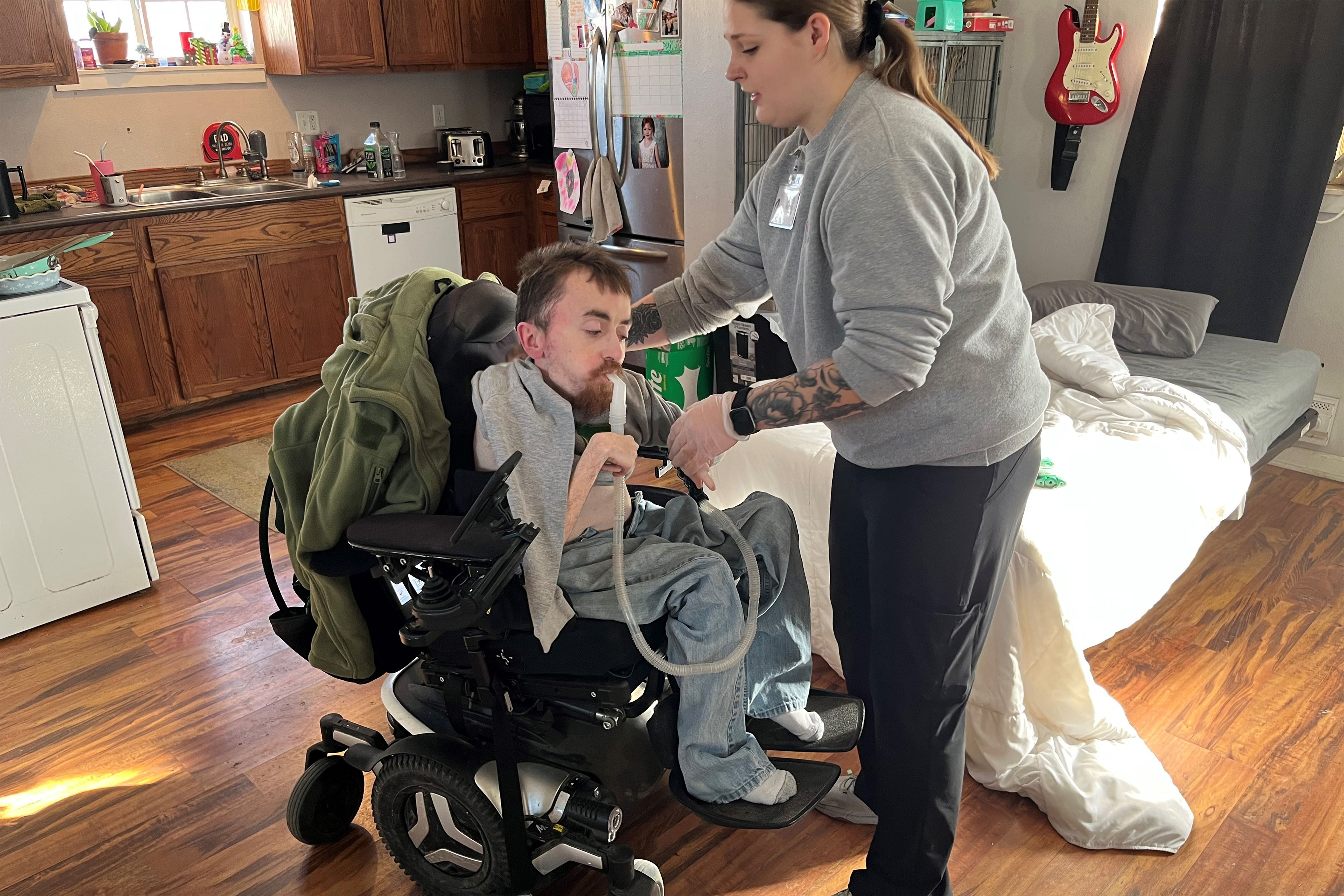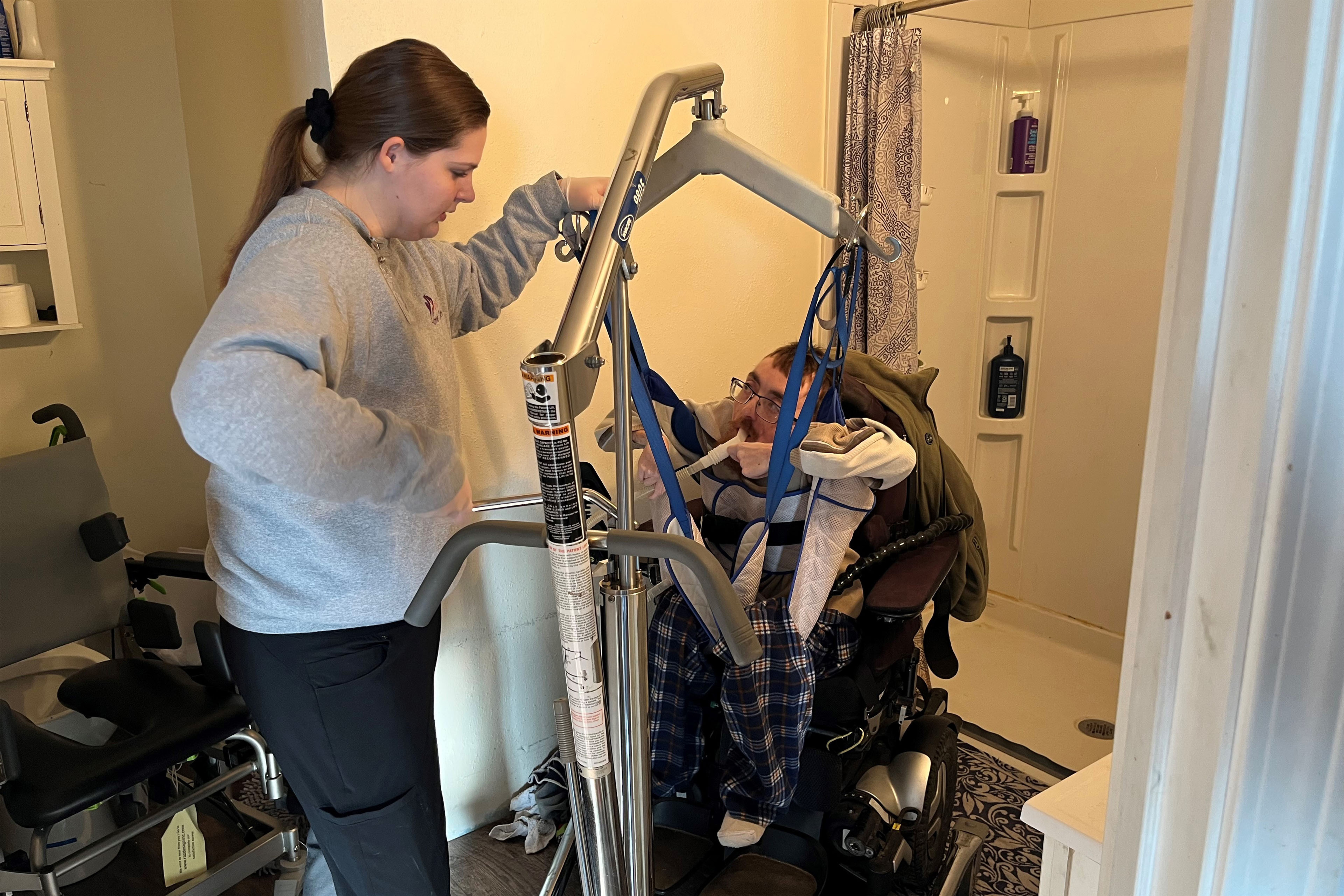
Tina Ewing-Wilson remembers the last time major Medicaid cuts slashed her budget.
In the late 2000s, during the Great Recession, the pot of money she and other Medi-Cal recipients depend on to keep them out of costly residential care homes shrank.
The only way she could afford help was to offer room and board to a series of live-in caregivers who she said abused alcohol and drugs and eventually subjected her to financial abuse. She vowed to never rely on live-in care again.
Now the 58-year-old Republican from the Inland Empire is worried Medicaid cuts being mulled by her party in Washington could force her into another vulnerable spot.
“If they reduce my budget, that doesn’t change the fact that I need 24-hour care,” said Ewing-Wilson, who has struggled with seizures and developmental disabilities her entire life. “If they cut it too much, people will die or they’ll lose their freedoms.”
Similar stories have already surfaced in GOP-held swing districts nationwide where activists have been applying political pressure to sway vulnerable House members from supporting $880 billion in cuts that health experts say would almost certainly hit safety net programs. But in California, which sends more Republicans to Congress than any state west of Texas, consumer groups and health industry giants are joining forces in a quieter campaign to lobby lawmakers in solidly red districts, some of which they say would be disproportionately affected if those cuts materialize.
Organizers are trying to highlight a thorny fact that faces many conservative members as they navigate a complex decision: The scale of spending cuts top GOP leaders are demanding is nearly impossible to achieve without slashing Medicaid funds to states, which are a lifeline for their largely poor, rural districts. In Rep. Doug LaMalfa’s northern Sierra district stretching to the Oregon border, for example, some 43% of residents are enrolled in Medi-Cal, while 48% of residents in Rep. Jay Obernolte’s district, centered on San Bernardino County, rely on Medi-Cal.
“The hospitals, the health plans — we don’t always get along with those folks,” said Dustin Corcoran, CEO of the powerful California Medical Association, which represents more than 55,000 doctors and encouraged its members to call their representatives. “On this, there’s not a lot of daylight. It will take strange bedfellows, for sure.”
The California Hospital Association has sent letters to Republican lawmakers and encouraged executives of its more than 400 member hospitals to reach out or provide tours to them. Consumer advocates and patient groups have protested outside members’ district offices and community health center CEOs have requested private meetings.
The House of Representatives in February approved a budget framework tasking the committee overseeing Medicaid to cut $880 billion over 10 years. While there are still no specific provisions cutting Medicaid, Medicare, or other safety net programs, health care analysts say the magnitude of the spending reductions means they’re inevitable. They could force millions of Californians off Medi-Cal (the state’s Medicaid program covers roughly 15 million people), reduce benefits for those still enrolled, and lower reimbursement rates for physicians at a time of acute provider shortages, said Kristof Stremikis, director of market analysis and insight for the California Health Care Foundation, a nonprofit that advocates on health care policy.
“What you’re talking about at the end of the day is reductions in funding that the states, including California, are in no position to make up,” Stremikis said. “You see that reflected in the different groups that have come together to talk about how important this program is.”
Even before Congress approved its controversial budget plan, Corcoran said, doctors and other industry representatives had been holding weekly calls for months to discuss how to protect Medicaid funding following Republicans’ substantial wins in November. Corcoran has also rallied physicians’ groups out of state, sending a joint letter to House leaders in February. The group has asked individual doctors to call or write their congressional representatives as well.
Many Republican lawmakers appear to be lying low while home after House leadership advised GOP members against holding in-person town halls, blaming Democratic activists for “hijacking” the events. A viral clip showed Obernolte getting booed down by constituents at a district event.
Meanwhile, LaMalfa said on the House floor in February that the spending resolution, which all nine California Republicans voted for, does not cut Medicaid, Medicare, or other social safety net programs.
“Any claim to the contrary is actually fearmongering, plain and simple, or I guess in my neighborhood it would be known as a lie,” he said.
Neither LaMalfa nor Obernolte responded to requests for comment.
Jo Campbell, who runs a federally qualified health center in LaMalfa’s district, said she has invited the lawmaker to join her and other local clinic executives to explain how the federal government can cut the $880 billion without touching funding crucial to health centers like hers.
“We all kind of live financially on a knife’s edge,” said Campbell, CEO of Hill Country Community Clinic, roughly half of whose patients rely on Medi-Cal. “It could mean the difference of whether or not we keep our doors open.”
Campbell hasn’t heard back from LaMalfa’s office.
Executives at Adventist Health, which has 23 hospitals across California, have met with Central Valley Republican Reps. Vince Fong and David Valadao and have requested a meeting with LaMalfa, with whom they worked closely after one of its hospitals burned in the 2018 Camp Fire.
“They’re all at different places,” said Adventist spokesperson Julia Drefke. “I think they understand what it means for their community. What that translates to in terms of their vote could be a different thing.”
In 2023, Medi-Cal made up more than 80% of patient revenue at Surprise Valley Community Hospital in LaMalfa’s district, for example, and 64% of patient revenue at Loma Linda University Children’s Hospital, in Obernolte’s district, came from Medi-Cal, according to a CHCF analysis of state data.
Sabrina Epstein, a policy analyst with Disability Rights California, said she’s encouraging local activists, no matter where they live, to engage with California’s congressional Republicans.
“It only takes a few votes to keep Medicaid going, to protect it in Congress,” she said. “We don’t know where those votes are going to come from.”
Republicans — swing district or not — will now have to weigh the popularity of Medicaid among their constituents with pressure from national Republicans who see a once-in-a-generation opportunity to shrink the size of government and have shown little mercy for party members who fall out of line. More than three-quarters of Americans have a favorable opinion of Medicaid, according to a January KFF poll.
Complicating that calculation is the recent revelation by Gov. Gavin Newsom’s administration that California’s Medi-Cal program is billions of dollars short and relying on a loan to cover the overrun. Republican state legislators have singled out California’s decision to cover low-income residents regardless of legal status, although other factors have also contributed.
“The majority party decided to add billions of dollars to the cost of Medi-Cal and it was so nonsensical,” said GOP Assembly member Joe Patterson. “That’s a self-inflicted wound.”
Jenny McLelland, whose 13-year-old son has a breathing disability that requires round-the-clock care, said cutting benefits for immigrants would end up costing taxpayers more, when they show up in emergency rooms with more complicated ailments.
“I don’t buy the argument that other people are any less deserving of care than my son,” said McLelland, who lives in Clovis, part of Fong’s district. For her son, Medi-Cal is “a matter of life and death,” she added.
She believes if Fong understood how vital Medi-Cal is to families, he would work to make the system better.
It remains to be seen whether targeting House Republicans will change minds when a final budget package is voted on. Two vulnerable members — Valadao and Young Kim, who represents a district east of Anaheim — have signaled they’ll oppose major cuts to Medicaid. Rep. Ken Calvert, whose Palm Desert district office was targeted by protesters during the spring recess, said in a statement that he favors work requirements and would not support Medicaid cuts for “mothers, children, disabled, and low-income Americans.”
In Valadao’s district, state data shows, two-thirds of residents rely on Medi-Cal, which is the single biggest payer for all five general acute care hospitals there. That includes Adventist Health Delano, which derives two-thirds of patient revenue from Medi-Cal, according to the CHCF analysis.
Most other GOP House members remain silent.
Ewing-Wilson voted for Obernolte, who won reelection by 20 percentage points and is in little danger of losing. She’s been trying for weeks to get a meeting with him. If he votes to cut Medicaid, she said, “I will be very disappointed in him, because I voted for him, expecting that he would care about all of his constituents.”

